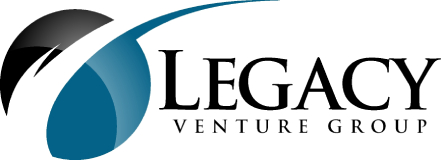
Buying an Existing Online Business – Cost-Effective?

When Buying an Existing Online Business Is More Cost-Effective Than Starting One
The Common Misconception About Starting a Business
Many entrepreneurs believe that starting a business from scratch is the most cost-effective way to become a business owner. While this approach works in some cases, it often overlooks the significant benefits of purchasing an existing business.
The SBA’s website claims that “purchasing cost may be much higher than the cost of starting a new business,” but this statement ignores the many scenarios where buying an existing business is less expensive and far more advantageous.
In this article, we will analyze real-world scenarios using data to debunk the myth. If you’ve wondered, “Should I start or buy a business?” read on to learn why purchasing an existing online business for sale can often be the smarter choice.
Comparing Startup Costs vs. Buying an Online Business
To illustrate our point, we analyzed data from a real-world case involving an online business for sale (details anonymized for confidentiality). The business, which operated in a niche market, saw steady growth and profitability over several years.
The original owner invested significant capital into the startup phase, faced losses in the first few years, and eventually reached profitability. In contrast, the buyer who acquired the business later skipped the unprofitable startup phase and began earning positive cash flow immediately.
Scenario 1: The Startup Phase
In this scenario, the original owner started the business from scratch, investing $250,000 upfront. Over the first two years, the business experienced losses, followed by modest profits in subsequent years. By year five, the business generated $85,000 in Seller’s Discretionary Earnings (SDE). Over ten years, the business grew steadily, and the owner eventually sold it for 2.5 times the SDE of the tenth year.
Here’s how the cash flow looked:
Figure A – Startup, Keep 10 Years, Sell
| Year | Cash Flow |
|---|---|
| Invest | $(250,000.00) |
| Year 1 | $(82,000.00) |
| Year 2 | $(39,000.00) |
| Year 3 | $37,000.00 |
| Year 4 | $49,000.00 |
| Year 5 | $85,000.00 |
| Year 6 | $95,000.00 |
| Year 7 | $103,000.00 |
| Year 8 | $105,000.00 |
| Year 9 | $108,150.00 |
| Year 10 | $111,394.50 |
| Sold | $278,486.25 |
By year 10, the business was worth $278,486 based on 2.5 times the SDE.
Scenario 2: Buying an Existing Business
In the second scenario, the buyer acquired the business after it had already reached $85,000 in SDE. The buyer paid $212,500 (2.5 times the SDE) for the acquisition. From day one, the buyer began earning profits, avoiding the losses experienced during the startup phase.
Figure B – New Owner Acquires for Cash and Sells in Year 10
| Year | Cash Flow |
|---|---|
| Invest | $(212,500.00) |
| Year 1 | $95,000.00 |
| Year 2 | $97,850.00 |
| Year 3 | $100,785.50 |
| Year 4 | $103,809.07 |
| Year 5 | $106,923.34 |
| Year 6 | $110,131.04 |
| Year 7 | $113,434.97 |
| Year 8 | $116,838.02 |
| Year 9 | $120,343.16 |
| Year 10 | $123,953.45 |
| Sold | $309,883.63 |
This scenario demonstrates the immediate cash flow advantages of purchasing an established business. By avoiding the startup losses, the buyer achieved greater returns in a shorter timeframe.
Scenario 3: Financing the Acquisition
In the third scenario, the buyer purchased the same business using an SBA loan, contributing only 20% of the purchase price ($42,500) and financing the rest. This approach required less upfront investment and allowed the buyer to enjoy steady cash flow while paying off the loan.
Figure C – New Owner Uses SBA Loan
| Year | Cash Flow |
|---|---|
| Invest | $(42,500.00) |
| Year 1 | $79,816.76 |
| Year 2 | $82,666.76 |
| Year 3 | $85,602.26 |
| Year 4 | $88,625.83 |
| Year 5 | $91,740.10 |
| Year 6 | $94,947.80 |
| Year 7 | $98,251.73 |
| Year 8 | $101,654.78 |
| Year 9 | $105,159.92 |
| Year 10 | $108,770.21 |
| Sold | $309,883.63 |
This method offers the most significant advantage in terms of net present value (NPV).
Net Present Value Comparison
Here’s a summary of the NPV for each scenario, calculated using a 12% annual discount rate:
| Scenario | NPV ($) |
|---|---|
| Startup (Figure A) | $53,063.50 |
| Buy All Cash (Figure B) | $486,085.51 |
| SBA Loan (Figure C) | $570,296.83 |
The data shows that buying an existing online business for sale delivers better returns in both cash flow and NPV compared to starting from scratch.
Why Buying an Online Business Makes Sense
- Immediate Cash Flow: Purchasing an established business provides positive cash flow from day one.
- Proven Track Record: Existing businesses have historical data to validate performance, reducing uncertainty.
- Lower Risk: Avoid startup challenges like building a customer base or fine-tuning operations.
- Better Financing Options: Lenders are more likely to finance acquisitions with proven earnings.
If you’re wondering, “How do I value my business before selling?” or considering buying one, consult experts like Legacy Venture Group’s Florida Business Broker team.
Debunking the Cost Myth
The myth that starting a business is always cheaper ignores critical factors like startup losses, time investment, and risk. An online business for sale offers immediate profitability, eliminating the high costs associated with startups.
Key Takeaways
When considering business ownership, remember these insights:
- Buying an existing business often delivers better returns.
- The Net Present Value (NPV) of acquisition scenarios exceeds startup scenarios in most cases.
- Financing options, such as SBA loans, make buying accessible to more entrepreneurs.
Whether you’re looking to sell or buy, Legacy Venture Group’s Florida Business Broker team can guide you. Visit LegacyVenture Group for expert advice.
Meta Description
Buying an existing online business often outperforms starting one. Discover why with Legacy Venture Group’s expertise.
Post Title
Buying or Selling Online Businesses with Legacy Venture Group
Focus Keyword
Online Business for Sale
